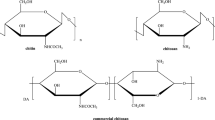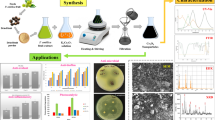Abstract
Brushite crystal formation and deposition is the central cause for recurrent kidney stone disease among the global population. The present study was aimed to rationalize the use of syzygium cumini nut on the brushite crystal formation invitro and to investigate the mechanism of action. Brushite crystals were grown at room temperature by single diffusion gel growth technique and the growth influencing study of these crystals in the presence of the natural product of syzygium cumini nut were carried out. The number of nucleated crystals was found to be less for the syzygium cumini nut extract added system when compared to the control system. The scanning electron micrograph images shows plate like morphology for the grown crystals. The thermal analysis shows that there is a decrease in the stability for the crystals grown in the presence of the syzygium cumini nut extract. By carefully observing the morphology and size of the crystals obtained, it is concluded that the syzygium cumini nut extract partially inhibits the growth of brushite crystals, particularly on its size. The reduction in stability may be due to the interaction of the host molecule on the surface.






Similar content being viewed by others
References
Misra RP (2000) Calcium and disease: molecular determinants of calcium crystal deposition diseases. Cell Mol Life Sci 57:421–428
Roy DK (2006) Role of diet in prevention of recurrent nephrolithiasis. Orion Med J 20:391–394
Klee LW, Brito CG, Lingeman JE (1991) The clinical implications of brushite calculi. J Urol 145:715–718
Krambeck Amy E, Handa Shelly E, Evan Andrew P, Lingeman James E (2010) Brushite stone disease as a consequence of lithotripsy? Urol Res 38:293–299
Heimbach D, Jacobs D, Hesse A, Muller SC, Zhong P, Preminger GM (1999) How to improve lithotripsy and chemolitholysis of brushite-stones: an in vitro study. Urol Res 27:266–271
Alok Shashi, Jain Sanjay Kumar, Verma Amita, Kumar Mayank, Sabharwal Monika (2013) Pathophysiology of kidney, gallbladder and urinary stones treatment with herbal and allopathic medicine: a review. Asian Pac J Trop Dis 3:496–504
Ivorra MD, Paya M, Villar A (1989) A review of natural products and plants as potent antidiabetic drugs. J Ethnopharmacol 27:243–275
Maghrani M, Zeggwagh NA, Haloui M, Eddouks M (2005) Acute diuretic effect of aqueous extract of Retama raetam in normal rats. J Ethnopharmacol 99:31–35
Paul Issac, Joseph Cyriac, Ittyachen MA (2003) Micro hardness studies of pure and doped brushite crystals. Indian J Phys 77A:37–40
Curry NA, Jones DW (1971) Crystal structure of brushite, calcium hydrogen orthophosphate dihydrate: a neutron-diffraction investigation. J Chem Soc A 3725–3729. https://doi.org/10.1039/J19710003725
Suguna K, Sekar C (2011) Role of strontium on the crystallization of calcium hydrogen phosphate dihydrate. J Miner Mater Charact Eng 10:625–636
Lee Donghyun, Kumta Prashant N (2010) Chemical synthesis and stabilization of magnesium substituted brushite. Mater Sci Eng C 30:934–943
Ruban Kumar A, Kalainathan S (2010) Effect of magnetic field in the microhardness studies on calcium hydrogen phosphate crystals. J Phys Chem Solids 71:1411–1415
Madhurambal G, Subha R, Mojumdar SC (2009) Crystallization and thermal characterization of calcium hydrogen phosphate dihydrate crystals. J Therm Anal Calorim 96:73–76
Sikiric M, Sarig S, Furedi- Milhofer H (1998) The interaction of small and macromolecules with growing calcium hydrogenphosphate dihydrate crystals. Prog Colloid Polym Sci 110:300–304
Kumta PN, Sfeir C, Lee DH, Olton D, Choi D (2005) Nanostructured calcium phosphates for biomedical applications: novel synthesis and characterization. Acta Biomater 1:65–83
Sekar C, Kanchana P, Nithyaselvi R, Girija EK (2009) Effect of fluorides (KF and NaF) on the growth of dicalcium phosphate dihydrate (DCPD) crystal. Mater Chem Phys 115:21–27
Author information
Authors and Affiliations
Corresponding author
Ethics declarations
Conflict of interest
The authors declare that they have no conflict of interest.
Rights and permissions
About this article
Cite this article
Bindhu, B., Veluraja, K. Medicinal Implication of Syzygium Cumini Nut on the Growth of Brushite Crystals. Proc. Natl. Acad. Sci., India, Sect. A Phys. Sci. 89, 587–592 (2019). https://doi.org/10.1007/s40010-018-0490-x
Received:
Revised:
Accepted:
Published:
Issue Date:
DOI: https://doi.org/10.1007/s40010-018-0490-x




